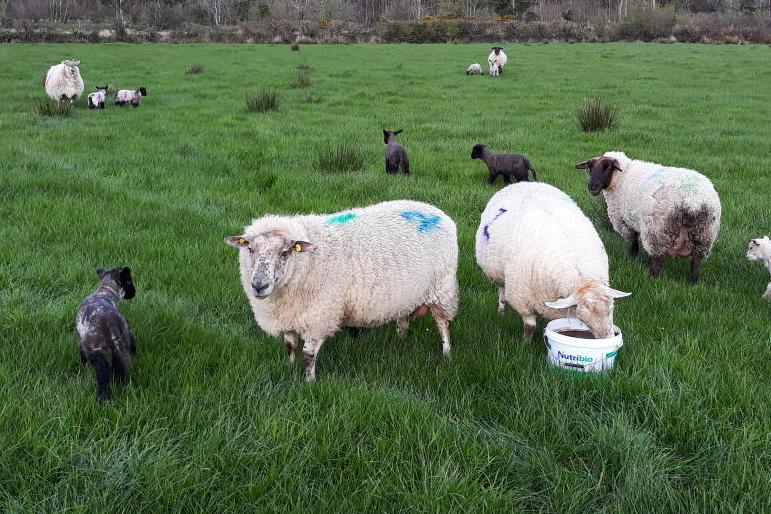Grass tetany
The forecast for the coming days includes wintry showers and sharp fluctuations in temperature, which will lead to an increased risk of grass tetany. As animals have a poor ability to store magnesium, prevention must focus on regular supplementation or enhancing magnesium absorption.
The most common form of supplementation is offering ewes access to high-mag lick buckets. Multiple buckets may need to be offered in large areas and where ewes and lambs are less likely to travel to access them. Feeding concentrates containing magnesium will help raise blood magnesium levels while even feeding standard concentrates will also help.
The highest-risk ewes are those under nutritional stress and approaching peak milk yield. A small level of concentrates offered in early lactation to these animals can deliver a twofold benefit. Magnesium bullets are also an option but take note the duration of cover is typically a maximum of three weeks. The addition of magnesium to water is less reliable during inclement weather while pasture dusting with calcined magnesite is possible but is a rare preventative aid used. Strategic grazing avoiding lush swards high in P and K during high risk periods can help but is not straightforward.
Transport regulations
Last week’s notes opened up the topic of assessing suitability of sheep for slaughter. EU regulation 1/2005, enforced in Ireland under statutory instrument SI 675/2006, governs the fitness of animals to travel and also influences their suitability for slaughter as, if an animal is not deemed fit for transport, it is not deemed fit for slaughter. Where there is a question over an animal’s suitability for slaughter, it will be assessed by veterinary personnel and where deemed unfit the animal will be condemned.
The first area assessed is the movement of animals. Animals must not be transported if they are unable to move independently, walk unassisted and remain standing or where there is a risk of them losing their balance during transport. Animals presented with a severe open wound or profuse bleeding will be immediately condemned. Examples of this include any surgical wound that reopens due to an infection or trauma.
Likewise, animals should not be transported if they have suffered from prolapse and where there is a risk that prolapsed organs (such as the rectum, vagina and uterus) can be easily damaged during transport, deteriorate further or where there is a risk of profuse or continuous bleeding.
Pregnant females (sheep or cattle) for whom 90% or more of the expected gestation period has already passed are prohibited, as are animals that have given birth in the previous week. The other aspects highlighted are animals presented suffering from severe emaciation or severe bloat.
Liver fluke
Remember outwintered ewes at risk of liver fluke infestation or ewes housed recently without treatment are advised to receive treatment in January and April and at shorter intervals where there is a high fluke burden likely. The risk at this stage of the year is mature liver fluke characterised by oedema / bottle jaw, anaemia, loss of body condition etc. Product selection should continue to focus on targeting mature and immature parasites while if ewes are housed for eight to 10 weeks it opens up the potential to use a product which just targets mature fluke.






 This is a subscriber-only article
This is a subscriber-only article










SHARING OPTIONS: